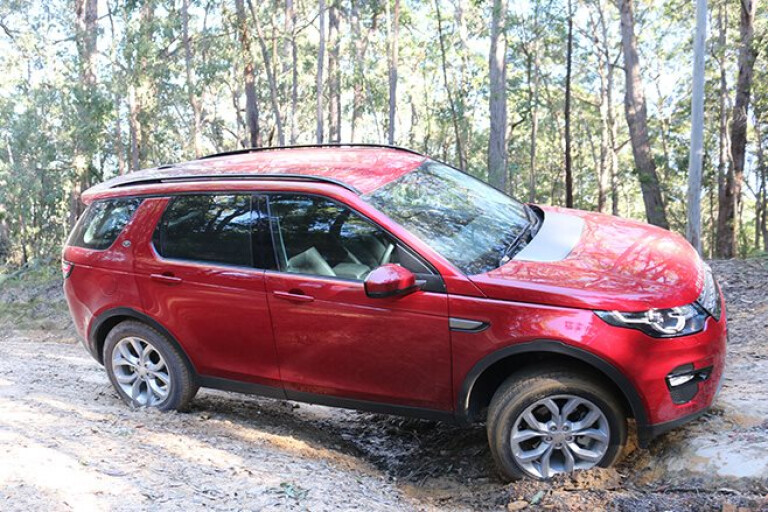
Price and specifications
Price: $59,000
Engine: 2.2-litre four-cylinder turbo diesel, 140kW at 4000rpm, 420Nm at 1750rpm
Transmission and 4WD system: 9-speed auto, single range 4WD with Terrain Response
Braked tow capacity: 2200kg
Spare tyre: Full-size
Fuel tank: 65 litres
Fuel use (claimed): 6.1L/100km
Fuel use on test: 8.8L/100km
Approach/departure angles: 25 degrees, 31 degrees
Ground clearance: 212mm
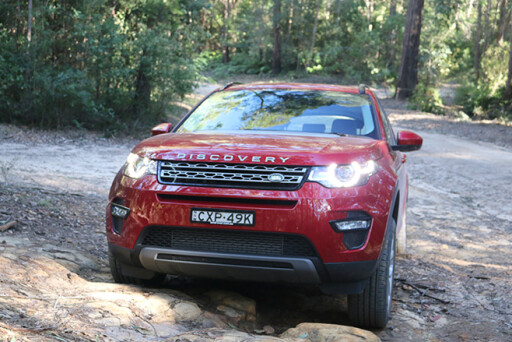 WHAT’S THE DEAL?
WHAT’S THE DEAL?
It’s all about the diesels with the Discovery Sport; of the six models on offer five of them are diesels. Within that mix are three trim levels – SE, HSE and HSE Luxury.
It’s the SE we tested here, complete with the more powerful of the two 2.0-litre turbo diesel engines. At $56,500 (plus on-road costs) the price is reasonably competitive, although it jumps to $59,000 once you factor in the nine-speed auto.
For that you get leather trim, dual-zone air-conditioning, a reversing camera, rear parking sensors and electric front seats. Safety is also well taken care of with a full complement of airbags, auto emergency braking and a unique-to-the-class pedestrian airbag designed to protect the heads of pedestrians if they’re struck.
 PRACTICALITY
PRACTICALITY
Owners of the existing Discovery should be prepared for a lot less space in the Sport. While it shares the Discovery name, the Sport is a replacement for the Freelander, so significantly smaller.
That said it’s relatively spacious. There’s good head and leg room up front and excellent storage, including a small shelf above the glovebox. People with plenty of gadgets to charge will also be well taken care of, with five USB plugs throughout the cabin.
The rear seats, too, are welcoming and broad. A sliding mechanism allows you to trade off between rear seat leg room and luggage space.
There’s a seven-seat option for the Discovery Sport, but they’re small seats best suited to kids or the more flexible among us. Plus they mean you lose the full-sized spare tyre that is a big part of the off-road sales pitch.
The boot has a flat floor and is relatively broad. Those rear seats can split-fold in a 40/20/40 configuration, for added flexibility.
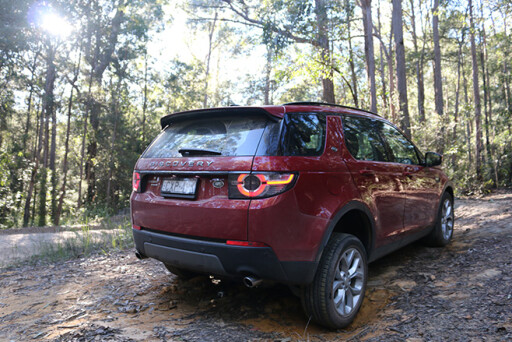 ON THE ROAD
ON THE ROAD
The Disco Sport is one of the best driving Land Rovers ever thanks to well sorted independent suspension and a driver-focused feel. It’s also quiet and well behaved, although push on too hard and the stability control will gently chime in to slow proceedings.
Grip from the 19-inch tyres on our car (18s are standard) is good and the car sits competently through bends, with only some gentle, well-controlled leaning.
Less impressive is the 2.2-litre diesel engine, which lacks refinement. It can be noisy and vibrate at lower revs, something more noticeable when cruising at 100km/h or 110km/h. Even the stop-start system – which shuts the engine down temporarily when stationary – leads to some rumbling when the engine re-fires.
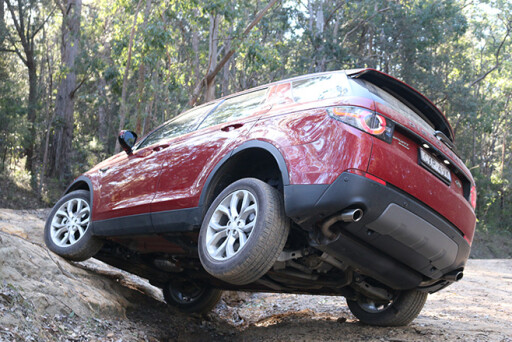 OFF-ROAD
OFF-ROAD
Discoverys have always been about off-road prowess, and Land Rover says the Sport delivers a “compelling combination of off-road capability and on-road dynamics”.
It starts with 212mm of ground clearance, which is acceptable rather than great. The 600mm wading depth is more impressive and makes for good river crossing credentials.
Less impressive is the approach angle, which is just 25 degrees. That may outdo some rivals, but it’s not at the levels traditional Land Rover owners have come to expect.
It’s particularly noticeable when tackling deep ruts or rocky climbs, where the lower black plastic bumper is susceptible to damage. Land Rover says it can be removed, but it’s not exactly a clip-on/off process – and few owners will be bothered.
The departure angle is a lot better, at 31 degrees.
The Disco Sport does without a dual-range transfer case and diff locks, instead relying on its Terrain Response system, which adjusts the throttle and traction control for various conditions – regular driving, grass/gravel/snow, mud and ruts, and sand.
There’s some pulsing as it directs the drive to wheels with traction, but it generally does a decent job, albeit without the effortlessness of a locked diff.
One limiting factor is the marginal wheel articulation. It doesn’t take much to kick a wheel in the air or hang diagonally opposing wheels once some semi-decent angles enter the equation.
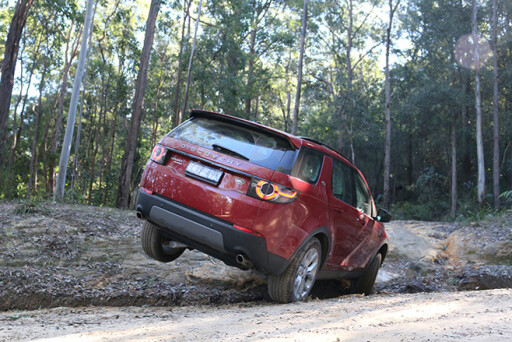 VERDICT
VERDICT
It’s far from a traditional Discovery in the way it tackles really difficult terrain. That’s mainly because it lacks the hardware – suspension with excellent articulation, for example – of one of the world’s most capable off-roaders. But the Discovery Sport is a big step up on its medium luxury rivals, with a willingness to clamber up some relatively challenging obstacles. And it’s complemented by great on-road dynamics, although the diesel engine is showing its age.
To read the review on the full Land Rover Discover range, click here to visit WhichCar.com.au
Get the latest info on all things 4X4 Australia by signing up to our newsletter.

COMMENTS